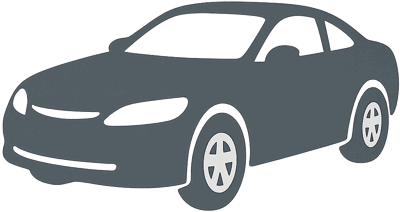 1995 Ferrari 512 M Dimensions, Size & Specs
1995 Ferrari 512 M Dimensions, Size & SpecsMeasurements of the 1995 Ferrari 512 M, engineered for optimal performance and comfort
| Dimensions | |
|---|---|
| Length: | 4480 mm176.4 in14.7 ft |
| Width: | 1976 mm77.8 in6.5 ft |
| Height: | 1135 mm44.7 in3.7 ft |
| Weight Specifications | |
| Curb Weight: | 1630 kg3594 lbs |
| Maximal permitted Weight: | 1840 kg4057 lbs |
| Tire Specifications | |
| Rims Sizes: | 108-inch rims:
|
| Tire Sizes: |
|
The Ferrari Testarossa 512 M represents the final evolution of the iconic Testarossa series, produced between 1994 and 1996. As a sleek coupe designed to blend striking performance with unique Italian styling, the 512 M carries the tradition of the legendary Ferrari Testarossa but with several refinements. The car measures 4480 mm (176.4 inches) in length, providing a compact yet aggressive stance on the road. Its width is 1976 mm (77.8 inches), emphasizing stability and presence, while the height stands at a low 1135 mm (44.7 inches), contributing to the car's aerodynamic profile. Weighing 1630 kg (3593 lbs) curb weight, the 512 M balances lightweight design with structural rigidity. The maximum permissible weight is 1840 kg (4056 lbs), reflecting its performance-oriented engineering. This generation rides on distinctive 18-inch rims with sizes of 8.5J x 18 ET36 at the front and 10.5J x 18 ET60 at the rear, paired with 235/40 R18 front tires and wider 295/35 R18 rear tires, which further enhance grip and handling characteristics. Overall, the Ferrari Testarossa 512 M coupe combines classic supercar dimensions with improved specifications, offering enthusiasts a unique blend of form, function, and Ferrari heritage.
Discover the standout features that make the 1995 Ferrari 512 M a leader in its class
Have a question? Please check our knowledgebase first.
The Ferrari Testarossa 512 M, produced between 1994 and 1996, measures 4480 mm (176.4 inches) in length, 1976 mm (77.8 inches) in width, and 1135 mm (44.7 inches) in height. These dimensions contribute to the car's iconic wide and low profile, which enhances its aerodynamic performance and visual appeal as a classic mid-engined grand tourer.
The curb weight of the Ferrari Testarossa 512 M is approximately 1630 kg (3594 lbs), which reflects the car’s dry weight including standard fluids and a full tank of fuel but no passengers or cargo. The maximum permissible weight of the vehicle is 1840 kg (4056 lbs), allowing for passengers, cargo, and additional fluids. This weight balance supports the car’s handling dynamics and performance on the road.
The Ferrari Testarossa 512 M comes equipped with front rims sized at 8.5J x 18 with an offset (ET) of 36 and rear rims at 10.5J x 18 with an ET of 60, both featuring a bolt pattern of 5x108. The front tires measure 235/40 R18, while the rear tires are wider at 295/35 R18. This staggered setup improves traction, handling, and overall driving stability on both normal and spirited driving conditions.
A standard residential garage typically measures about 2440 mm (8 feet) in width and about 5180 mm (17 feet) or greater in length. With its width of 1976 mm (77.8 inches) and length of 4480 mm (176.4 inches), the Ferrari Testarossa 512 M will fit comfortably within most standard garage spaces. However, because of the car’s low height of 1135 mm (44.7 inches), clearance in height is generally not an issue. It’s still advisable to measure individual garage dimensions to ensure a proper fit, especially considering door widths and any obstructions.
The 512 M represents an evolution of the original Testarossa (1984–1991). While the overall footprint remained quite similar, the 512 M features a slightly refined design with subtle changes to cooling slats and bodywork. The length of the 512 M is 4480 mm (176.4 inches), very close to the original Testarossa's length which was roughly around 4485 mm (176.6 inches). The 512 M is marginally wider and lower, continuing the iconic aggressive stance but with slight aerodynamic and cooling improvements. Weight differences are minimal, with the 512 M benefiting from some technical improvements and slight changes in curb weight. Overall, the 512 M kept the core dimensions but improved functionality and performance.
Compared to contemporaries like the Lamborghini Diablo and Porsche 959, the Ferrari Testarossa 512 M is wider than both, with a width of 1976 mm (77.8 in) versus approximately 2035 mm (80.1 in) for the Diablo and 1790 mm (70.5 in) for the 959. In terms of length, the Testarossa 512 M at 4480 mm (176.4 in) is shorter than the Diablo (~4485 mm, 176.6 in) but longer than the Porsche 959 (~4450 mm, 175.2 in). Its low height of 1135 mm (44.7 in) makes it one of the lower supercars, enhancing aerodynamics and handling. The Testarossa 512 M’s generous width contributes to superior road-holding but requires consideration for tight parking spaces.
The Ferrari Testarossa 512 M is a two-seat coupe designed with a focus on driver engagement and performance. While exact interior dimensions are proprietary, the car offers a snug but driver-oriented cockpit, fitting a driver and one passenger comfortably. Headroom and legroom are adequate for average-height occupants but might feel tight for taller individuals due to the car’s low height of 1135 mm (44.7 inches). Storage space is limited, as is common with mid-engine sports cars, focusing more on performance and style rather than practicality.
The Ferrari Testarossa 512 M, with its width of 1976 mm (77.8 inches), is wider than typical passenger cars, requiring careful attention when parking in tight urban spaces or narrow streets. Its length of 4480 mm (176.4 inches) and relatively low height decrease aerodynamic drag but may limit visibility, especially in reverse. The car’s curb weight of 1630 kg (3594 lbs) also demands cautious acceleration and braking in stop-and-go traffic. Parking aids such as sensors were not common in this era, so maneuvering requires skill and awareness of the vehicle's dimensions.
The Ferrari Testarossa 512 M’s staggered rim and tire setup—8.5J x 18 rims with 235/40 R18 tires at the front and wider 10.5J x 18 rims with 295/35 R18 tires at the rear—optimizes the balance of grip, handling, and stability. This setup improves traction at the rear, especially given the car’s rear-mid engine layout and rear-wheel drive. Wider rear tires allow for better power distribution and cornering stability. The use of 18-inch rims was advanced for the mid-1990s, contributing to responsive steering and a smooth contact patch with the road.
Beyond size, the 512 M incorporated several important design and technical updates over the original Testarossa. These included updated cooling with redesigned side strakes and revised radiators for improved engine thermal management, subtle body styling tweaks making the car appear sleeker and more modern. The 512 M also featured enhancements in suspension and braking systems for better handling dynamics. Internally, minor updates improved ergonomics and driver comfort. These refinements maintained the iconic Testarossa silhouette while enhancing performance reliability and everyday usability.
Discover similar sized cars.

| Production: | 1992-1994 |
|---|---|
| Model Year: | 1992 |
| Length: | 4480 mm176.4 in |
| Width: | 1975 mm77.8 in |
| Height: | 1135 mm44.7 in |
| Production: | 1984-1992 |
|---|---|
| Model Year: | 1985 |
| Length: | 4485 mm176.6 in |
| Width: | 1975 mm77.8 in |
| Height: | 1130 mm44.5 in |

| Production: | 2024-present |
|---|---|
| Model Year: | 2024 |
| Length: | 4490 mm176.8 in |
| Width: | 2000 mm78.7 in |
| Height: | 1140 mm44.9 in |
